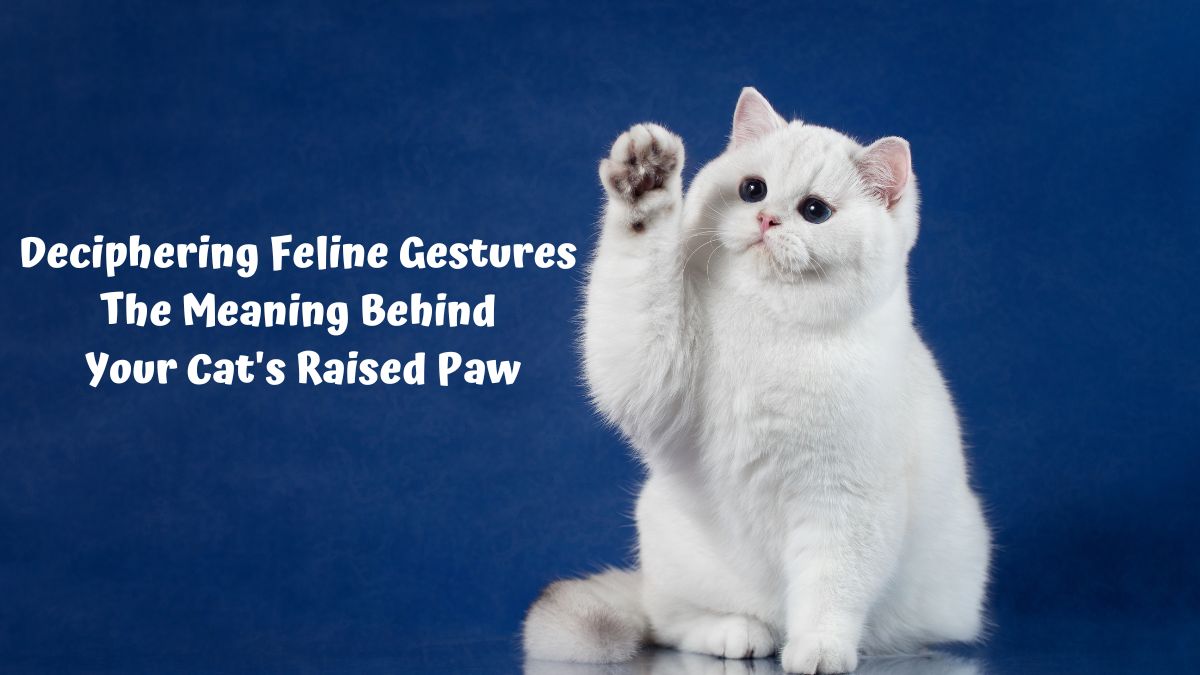Step into the silent world of feline language with our exploration of one of cats’ most endearing behaviors: holding a paw up while sitting.
This simple action speaks volumes, revealing a cat’s emotions, needs, and health status. Understanding this behavior can significantly strengthen your bond with your furry friend.
From signs of curiosity and playfulness to quiet requests for attention or indications of discomfort, this article will guide you through the complex messages conveyed by your cat’s paw gestures.
Embark on this journey to enhance your connection with your whiskered companion in ways you never imagined.
Understanding Feline Gestures
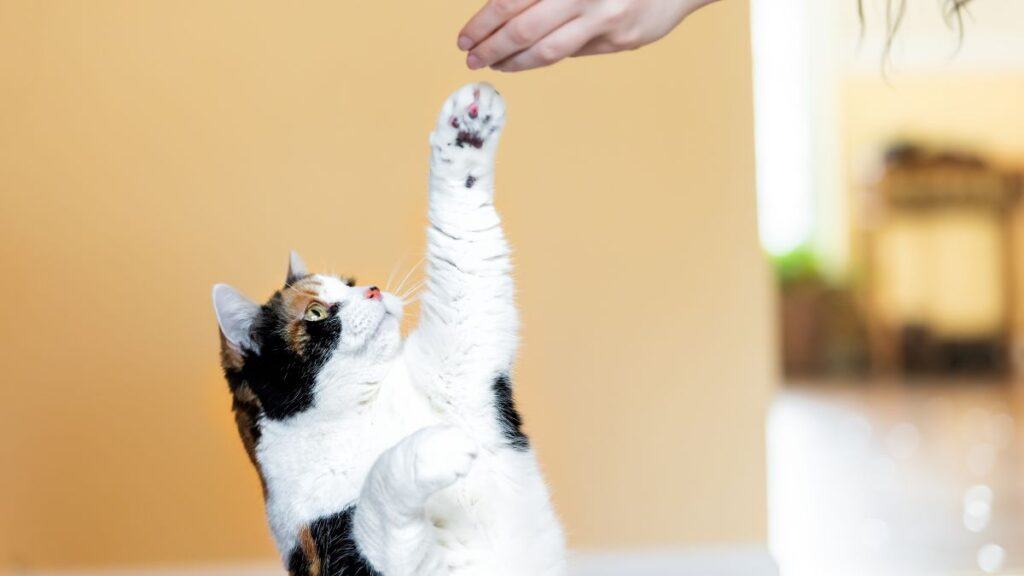
Cats communicate through a variety of body language, including paw gestures. Recognizing the implications of these movements is essential for understanding our feline friends.
The Language of Paw Gestures
Cat paw gestures can convey a wide range of emotions and intentions. For example, a cat lifting its paw while sitting might be expressing curiosity or preparing to swipe at an object.
Careful observation of the context can help determine whether a paw lift is a sign of anticipated play or targeted exploration.
- Curiosity: A slow paw lift might indicate interest in nearby activities.
- Playfulness: Quick, repeated lifts may signal a playful mood or potential excitement.
Physical Expression of Cat’s Needs
Cats often use physical movements to communicate their needs to their human companions. For example, if a cat holds up a paw, it may be requesting attention or indicating a desire for food or petting.
Body language and vocalizations can provide clues to a cat’s current needs.
- Requesting Attention: Persistent paw lifting can be a diplomatic plea for engagement.
- Signaling Desire for Food or Comfort: Accompanying meows might suggest hunger or a wish for comfort.
Identifying Signs of Pain or Affection
A paw gesture could be a subtle exhibit of trust demonstrating affection when accompanied by a soft gaze or purring.
However, it is crucial to observe if the behavior is a consistent sign of affection or a sporadic occurrence that might indicate discomfort or pain.
- Affection: A gentle paw touch can be a cat’s show of affection towards its owner.
- Pain: If a cat holds up its paw and avoids putting weight on it, it may indicate injury or pain.
Health and Physical Condition
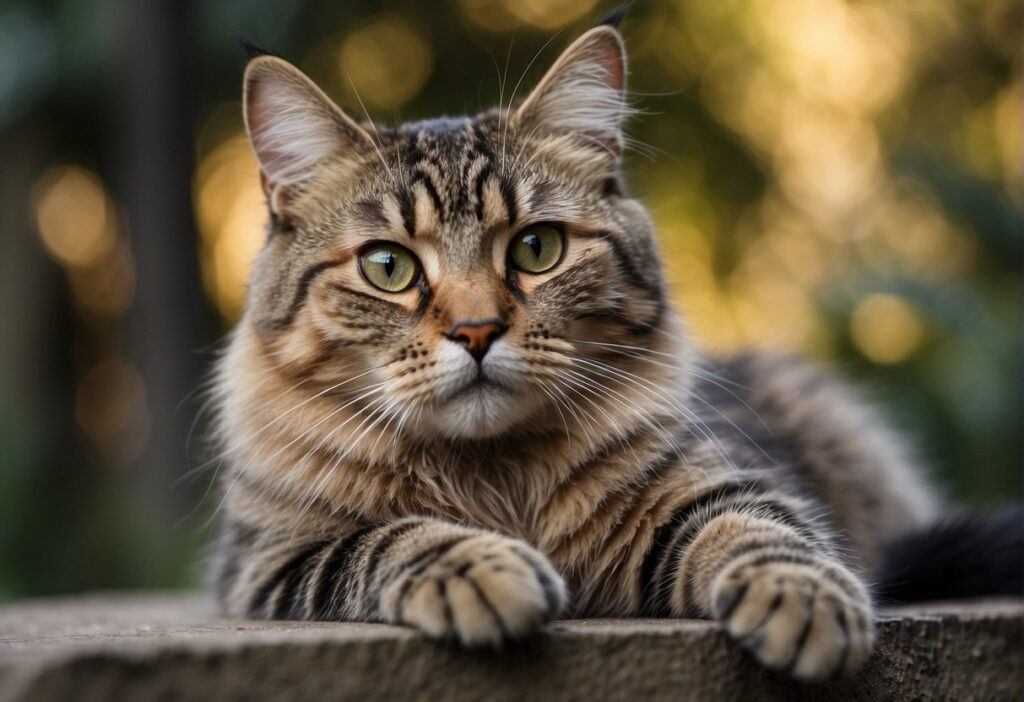
When a cat is seen with its paw raised while sitting, it could be a sign of an underlying health or physical issue that requires attention.
Spotting Limping and Injuries
Cats may lift a paw if they have sustained an injury, such as a puncture wound, or have a painful sprain. Observing the affected front or back legs for signs of distress is critical.
Signs include limping, reluctance to put weight on the limb, or continuous paw raises.
Carpal Hyperextension and Other Conditions
Cats can suffer from carpal hyperextension, where the wrist joint becomes weakened. This can lead to abnormal posture and holding up a paw.
It is vital to recognize other conditions, such as blood clots, that may not be immediately visible but manifest through behavioral changes like holding a paw up.
The Need for Veterinary Attention
Any suspicion of an internal injury, open wound, or painful condition necessitates visiting a veterinary clinic.
If basic first aid does not resolve the issue, it is imperative to set a vet appointment.
A veterinary specialist can perform a thorough examination to diagnose the issue and initiate appropriate treatment.
Cats in Their Environment
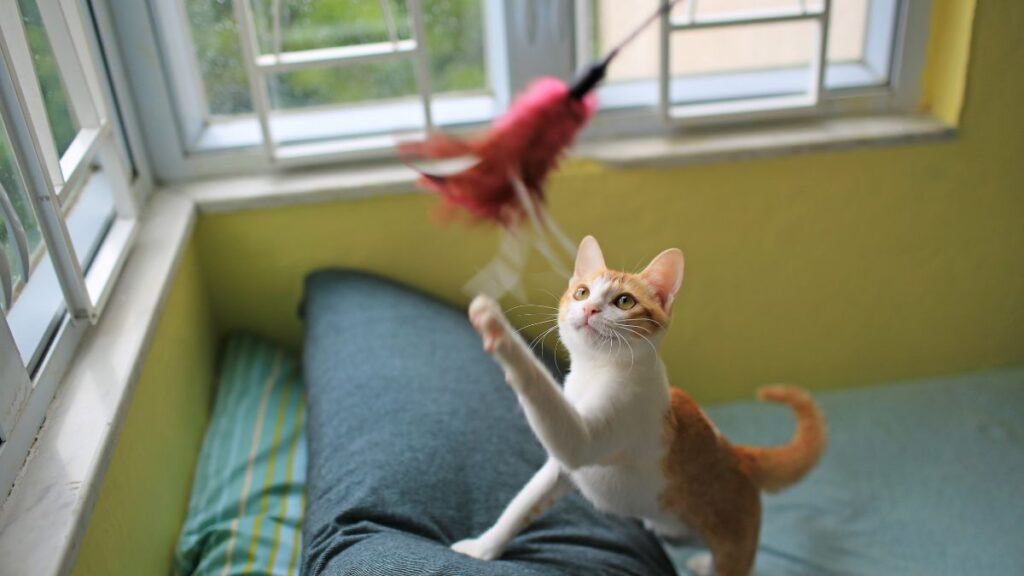
Understanding a cat’s behavior in its environment requires observing its interactions with objects, assessing potential threats to its safety, and recognizing its daily routines and comfort levels.
Interactive Objects and Play
Cats exhibit a solid instinct to explore and play in their environments. Interactive objects like toys often stimulate a cat’s natural hunting behaviors.
An environment with play opportunities, including objects like strings or balls, keeps them active and mentally sharp.
Regular playtime with items such as a feather wand or a laser pointer provides vital stimulation and strengthens the bond between cats and their owners.
Potential Threats and Safety
In addition to providing interactive play, a cat’s environment must be safeguarded against potential threats.
Cats are naturally curious, so open windows might risk falling if not adequately secured. Similarly, strange noises can lead to stress, so a stable environment with predictable sounds is preferred.
Safety around the litter box area is critical as well. Ensuring cats have a clean, accessible space to do their business builds trust and promotes good health.
Daily Routines and Comfort Zones
Cats are creatures of habit and thrive on daily routines.
These routines can include set times for feeding, grooming, and sleeping. Consistent locations for their food and water bowls contribute to a sense of security.
Providing a soft surface, such as their beds or a cushioned window sill, allows for comfortable resting spots.
Additionally, properly arranging their belongings, such as placing the litter box in a quiet yet reachable spot, furthers their comfort and helps maintain a clean environment.
Cat Body Language and Communication

Cats use diverse body language signals to communicate their feelings and intentions to their human companions and other animals.
Decoding the Raised Paw
- Observation: A cat with a paw raised may be expressing various emotions or intentions.
- Contextual Clues: Consider surroundings and additional body signals to understand the behavior.
A cat sitting with a paw lifted could signify contentment or anticipation. A raised paw can be a cat’s way of politely asking for attention or indicating curiosity about an object or situation.
Consistency in the raised paw behavior and other relaxed body language may indicate a happy, comfortable state.
However, a raised paw might also indicate a cat is preparing to play or pounce, interpreting it as a sign of playful intention or interest in interacting with something in their environment.
Understanding Rear End Elevation
- Posture: Cat standing with rear end raised, often accompanied by tail quivering or shaking.
- Interpretation: This posture can be a greeting or invitation for interaction.
If a cat raises its rear end when approached, particularly if accompanied by purring or rubbing, it generally conveys a friendly and welcoming gesture, inviting petting or attention.
When a cat elevates its rear while standing, it can also indicate a receptiveness to play or social engagement with other cats or humans.
Observing a cat’s tail movements with its rear-end elevation offers additional insight.
Still or slightly twitching tails might indicate a more relaxed stance, while swift tail movements can suggest heightened attention or excitement.
Caring for Your Feline Friend
Proactive care and understanding of a cat’s behavior are crucial in ensuring the health and happiness of your feline friend.
The Importance of Regular Check-Ups
Regular veterinary check-ups are vital for maintaining your cat’s health. These check-ups often lead to the early detection of illnesses that might affect your cat’s soft tissues or other body parts.
A good idea for pet parents is to consider these check-ups a first step toward preventive care.
- Frequency: At least once a year for adults, more often for kittens and seniors
- Vaccinations: Keep them up to date to prevent diseases
- Parasite Control: Discuss options for flea, tick, and worm prevention with your vet
Managing and Monitoring Cat’s Behavior
Cat owners need to manage and observe behavioral changes in their furry friends.
For instance, if your cat holds a paw up while sitting, this may be a sign of injury or discomfort. A proactive measure is to seek a logical explanation from a veterinarian.
- Environment: Maintain a safe and stimulating environment to prevent behavioral issues
- Observation: Watch out for any changes in behavior that might signal pain or discomfort
- Intervention: Consult with a vet if unusual behavior persists
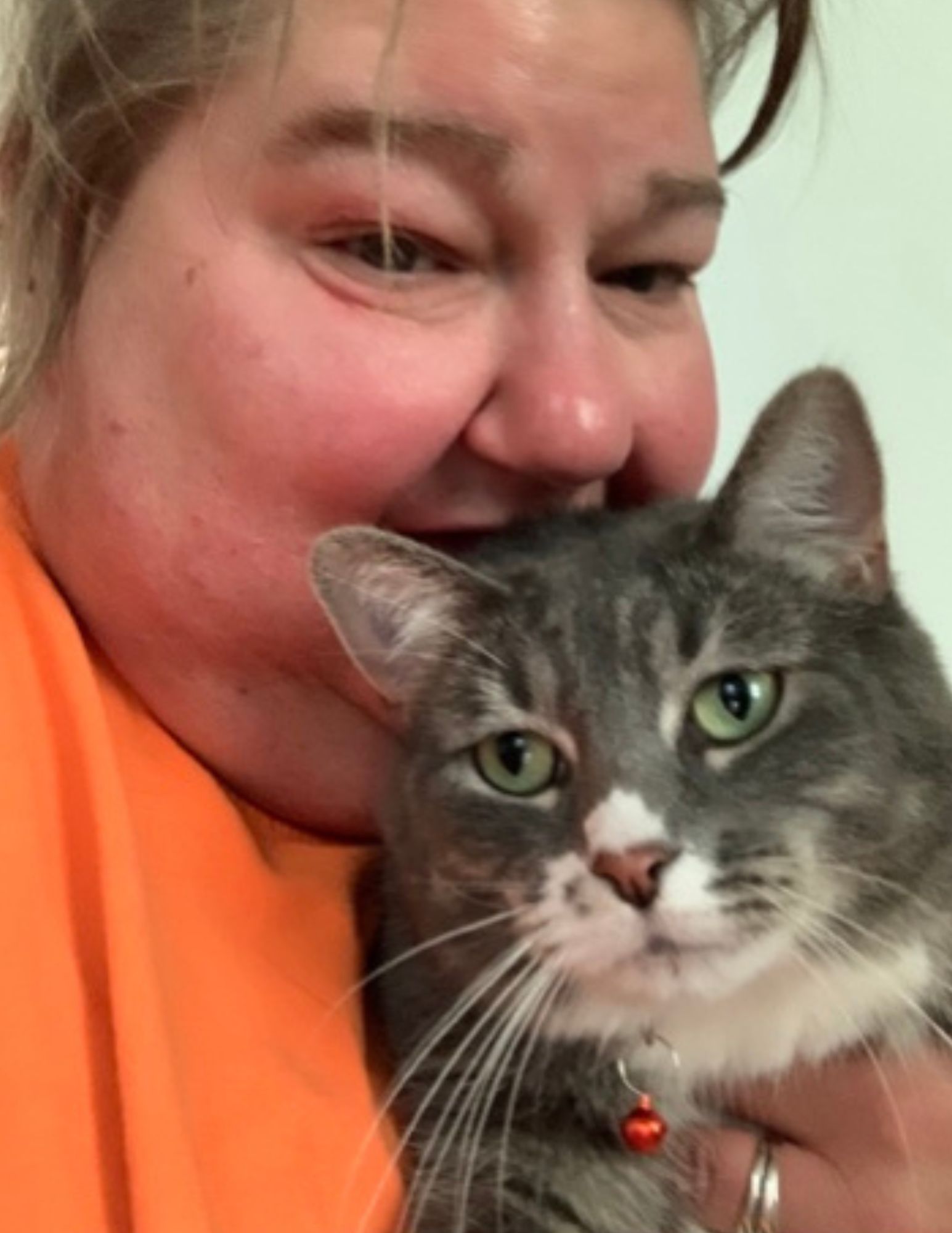
Meet Ann Haasnoot, the passionate founder of CatFurLife.com. A lifelong cat lover from Wisconsin, Ann combines her extensive feline behavior and care knowledge with her love for writing. On her website, she shares invaluable insights about cat breeds, care tips, and her experiences with her beloved furbaby, aiming to deepen the bond between cats and their human companions.

